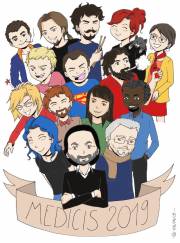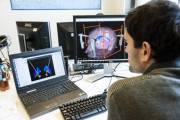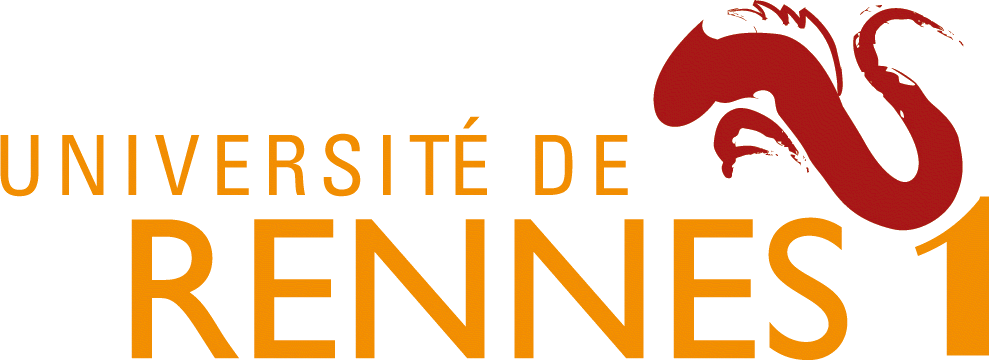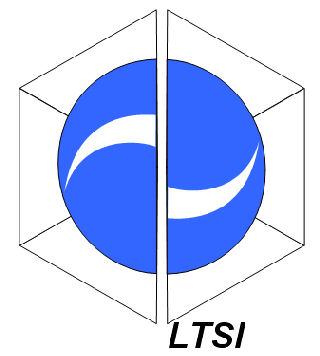News
Members
Publications
Software / Data
Job offers
Images / Videos
Collaborations
Conferences
Lab meetings: "Les partages de midi"
Practical information
Members Area
Next conferences we are in …





This shows you the differences between two versions of the page.
| Both sides previous revision Previous revision Next revision | Previous revision Next revision Both sides next revision | ||
|
activities:theme3:projects:semantic-annotation:index [2015/01/12 16:38] gibaud |
activities:theme3:projects:semantic-annotation:index [2015/01/21 17:15] gibaud |
||
|---|---|---|---|
| Line 33: | Line 33: | ||
| \\ | \\ | ||
| - | ===== Semantic representation of connectomics data ===== | + | ===== Ontology-based approach for in vivo human connectomics: the medial Brodmann area 6 case study ===== |
| In the following of the project we propose an ontology called "Human Connectomics Ontology" (HCO) and we show how it can be used to annotate in vivo human connectomics datasets. This ontology is an extension of the Foundational Model of Anatomy (FMA), specifically designed to represent structural connectivity imaged by diffusion tractography. It includes a subset of FMA, called Neuro-DL-FMA, built from several lists of brain anatomical structures: (1) the Freesurfer cortical regions (Desikan et al. 2006), (2) the white matter bundles of the JHU white matter tractography atlas (Wakana et al. 2007) and (3) a list of subcortical and hippocampal structures. In Neuro-DL-FMA, the original object properties (such as fma:regional_part_of and fma:constitutional_part_of) - originally represented at the individuals' level - were translated at the classes' level (using existential restriction axioms). | In the following of the project we propose an ontology called "Human Connectomics Ontology" (HCO) and we show how it can be used to annotate in vivo human connectomics datasets. This ontology is an extension of the Foundational Model of Anatomy (FMA), specifically designed to represent structural connectivity imaged by diffusion tractography. It includes a subset of FMA, called Neuro-DL-FMA, built from several lists of brain anatomical structures: (1) the Freesurfer cortical regions (Desikan et al. 2006), (2) the white matter bundles of the JHU white matter tractography atlas (Wakana et al. 2007) and (3) a list of subcortical and hippocampal structures. In Neuro-DL-FMA, the original object properties (such as fma:regional_part_of and fma:constitutional_part_of) - originally represented at the individuals' level - were translated at the classes' level (using existential restriction axioms). | ||
| Line 41: | Line 41: | ||
| * Class hco:MR_node | * Class hco:MR_node | ||
| * Class hco:MR_route | * Class hco:MR_route | ||
| - | * Object property : hco:tracto_connects / hco:is_tracto_connected | + | * Object property : hco:tracto_connects / hco:is_tracto_connected (inverse property) |
| + | * Object property : hco:mr_connection | ||
| + | * Object property : hco:continuous_with | ||
| {{:activities:theme3:projects:semantic-annotation:ontology-files-for-hco.zip|"zip with ontology files"}} | {{:activities:theme3:projects:semantic-annotation:ontology-files-for-hco.zip|"zip with ontology files"}} | ||
| Line 48: | Line 50: | ||
| {{:activities:theme3:projects:semantic-annotation:subject01-hco.owl.zip|"subject 1 annotation file"}} | {{:activities:theme3:projects:semantic-annotation:subject01-hco.owl.zip|"subject 1 annotation file"}} | ||
| - | + | ||
| + | {{:activities:theme3:projects:semantic-annotation:subject02-hco.owl.zip|"subject 2 annotation file"}} | ||
| + | |||
| + | {{:activities:theme3:projects:semantic-annotation:subject03-hco.owl.zip|"subject 3 annotation file"}} | ||
| + | |||
| + | {{:activities:theme3:projects:semantic-annotation:subject04-hco.owl.zip|"subject 4 annotation file"}} | ||
| + | |||
| + | {{:activities:theme3:projects:semantic-annotation:subject05-hco.owl.zip|"subject 5 annotation file"}} | ||


